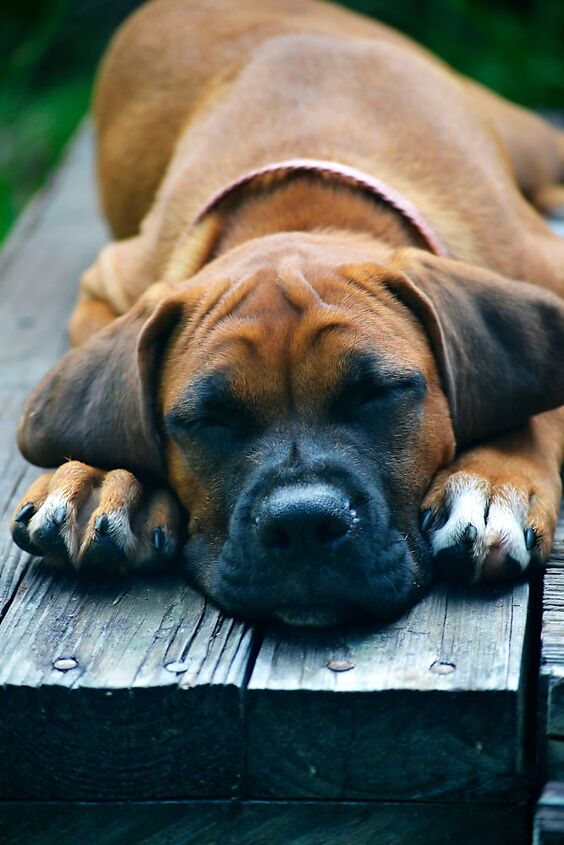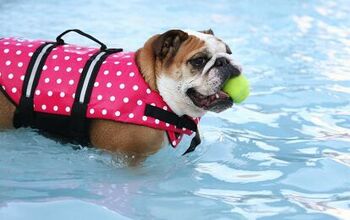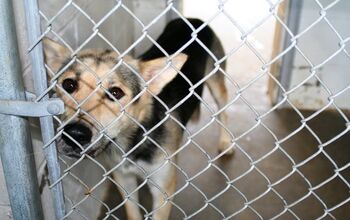Box-a-Pug


About Box-a-Pug
The fun-loving Box-a-Pug is an attention-loving pooch who makes a great family dog and outgoing four-legged companion. He brings together the playful characteristics of the Boxer with the cheerful personality of the Pug for a sociable little dog who loves to spend time with his family – whether enjoying outdoor activities or just chilling out on the sofa after a busy day. His highly protective nature toward his human pack makes him a great, non-aggressive watchdog but it also means he is prone to being yappy when he feels threatened, which doesn’t make him a great choice for apartments. It also means he will likely suffer from separation anxiety if left on his own for longer periods of time, so a home with a family member always present would be ideal.
The attention-loving Box-a-Pug brings together the cheerful personality of the Pug and the playful nature of the Boxer.
As a Designer Dog, the Box-a-Pug most likely first appeared around 30 or 40 years again when this style of dog was becoming more popular. Breeders began crossing two or more pure-breds to produce a dog that would be healthier, sometimes non-shedding and even gentler or smaller than the parent breeds. While he himself is a relatively new breed, both the Pug and Boxer DNA running through him carries some pretty impressive history. The Pug first surfaced in ancient China where he appears to have been a favorite and highly coveted pet of Chinese emperors. While he later appeared in Tibetan monasteries where he was again a much-loved house pet – this time of the Buddhist monks – it wasn’t until the 16th century that he first surfaced in the courts of Europe. When he arrived in North America around the mid-19th century, this cheery little dog rather quickly became a favorite pet breed. The Boxers descendants are rumored to include the Mastiff, Bulldog, Great Dane and even Terrier breeds but the dog as we know it today, first appeared in mid-19th century Germany where he was used for bull baiting and for controlling cattle in the slaughterhouses. It wasn’t until he arrived in North America in the late 19th century that his intelligence and bravery were fully recognized and he was enlisted for use in World War I where he performed active duty as a guard and messenger dog, carrying information across war zones. Today, this affectionate family pooch is often used as a therapy or service dog.
The Box-a-Pug’s mixed breed status means he does not qualify to join the American Kennel Club (AKC) however both of his parent breeds are well-established members. The always-playful Boxer became a member of the club’s “working” group back in 1904 and is described as brave, smart and active while the chill little Pug joined the “toy” group back in 1885 and is described as being a charming, mischievous and loving dog.
The Box-a-Pug is a small-to-medium sized dog that needs a nutrient-rich kibble that has been designed specifically for his age, size and activity level. Always opt for a food that is higher in protein and lower in fillers such as carbs that will cause him to constantly feel hungry and leave him wanting to over-eat, resort to mooching or start raiding the cat’s dish. Because this dog can suffer from joint issues later in life, it’s important to establish and maintain an ideal weight and you can speak to your vet if you’re not sure what this should be. Plan to feed him 2 to 3 smaller meals throughout the day versus allow him to free-feed and because the Box-a-Pug can be prone to bloat, you should hold back on any exercise or active playtime for at least an hour after feeding. With this dog potentially inheriting the Pug’s flatter, brachycephalic face, eating can get messy as he needs to press his entire face into his food and water dish. It can also result in him gulping air as he eats and becoming excessively flatulent – something the Pug is renowned for – so consider looking at some of the food and water dishes designed with a slight tilt that make it easier for flat-faced dogs to access his meals.
The Box-a-Pug may inherit a stubborn streak so patience will be needed when it comes to his training.
The Box-a-Pug may inherit a bit of a stubborn streak so patience will be needed when it comes to his obedience / basic command training. While he will respond best to a rewards-based approach that showers him with praise and treats each time he responds to your instructions, be sure that it is countered with firm, consistent instruction that establishes pack leadership and helps him understand what is expected of him. Socialization for any dog is important to help him get along with family members (primarily kids), be comfortable with new faces and understand how to play nice with other animals. This can be as simple as exposing him to new faces, sights, sounds and the smell of other animals. By ensuring these encounters are positive, you’ll build his self-confidence and make him more comfortable in new situations – meaning a lot less barking.
Your Box-a-Pug is the end result of two differently sized breeds and will likely weigh in the 20 to 25-pound range. So much more than the Pug but significantly less than the larger Boxer. Gender and DNA will both factor into which end of this weight range your new pup ultimately lands.
The Box-a-Pug is a loving, playful and sometimes stubborn dog that bonds quickly and deeply to his family members. As a result, he can become overly protective and yappy when he feels his pet parent is in danger or needs to be warned… even if it’s just the postman. He can also be prone to separation anxiety when left for longer periods of time and this can lead to destructive behaviors – including incessant barking – as a show of distress. While this makes for a great watchdog, it can be a problem for apartment dwellers or those who work away from home and need to leave him throughout the day. The Box-a-Pug loves to be the center of attention and absolutely thrives on human companionship; he’s never happier than when spending time with his human pack and that includes kids and other pets. A curious, intelligent personality makes him a fun companion dog who is always entertaining and as is typical of the Boxer dog, he never outgrows his playful nature.
Being a Designer Dog, the Box-a-Pug will typically be healthier than his pure-bred parents, because he has been specifically bred with a goal of eliminating some of the health issues that can plague his parent breeds. That said, you should do your homework to understand what your little guy could still inherit down the line. With the Box-a-Pug, that can include the respiratory issues common with Pugs due to their flatter, brachycephalic facial structure, cataracts and dry eye as well as joint issues including patella luxation and hip dysplasia from both breeds. The Boxer can also be prone to bloat, heart conditions and certain cancers. If your Box-a-Pug inherits the heavier facial folds of the Pug, he may also be prone to skin infections if they are not properly cleaned and dried. Now this list may seem a little overwhelming but this little guy is still considered a healthy dog who may live his entire life free of illness.
The Box-a-Pug is a smaller to medium sized dog and with a top-quality diet that is appropriate to his age and size, regular exercise as well as annual check-ups with your vet to monitor his health, you can expect your pooch will live a long and healthy life of between 12 and 15 years.
The Box-a-Pug comes from two dog breeds that couldn’t be more different when it comes to exercise. The Pug is playful but can have a lazy streak when it comes to physical exertion while the Boxer is a high energy breed and need loads of exercise to prevent him from becoming restless and destructive. Regardless of which side of the gene pool your Box-a-Pug lands, he’ll need regular daily walks to keep him physically fit, with interactive playtime that helps him show off his agility, earn some rewards and provide him with the mental stimulation this intelligent boy needs. Dog parks are a great option for burning off steam and they provide him with a great opportunity to socialize with other dogs. As with all brachycephalic dogs, the Box-a-Pug will need to be monitored during warmer weather as respiratory issues are a known concern. Shorter walks on hot days, plenty of fresh water available as needed and shady breaks to help him cool down, will be an absolute necessity to help ensure his physical safety.
The sometimes stubborn but always affectionate Box-a-Pug bonds quickly with his family.
The Box-a-Pug is also known as a Poxer and while his mixed breed status means he will never qualify to join the American Kennel Club’s list of pure-breds, he is recognized by several lesser known organizations including the Designer Breed Registry (DBR) and the International Designer Canine Registry (IDCR).
There is no question your Box-a-Pug will inherit the thin, short-haired coat of his parent breeds and this is great news because it means you don’t’ have to worry about matts and tangles, just brush him 2 to 3 times a week to keep loose hair in check and he’ll always look his best. While his facial structure will likely not be as flat as that of the Pug, he will have facial folds that require daily inspection and cleaning to prevent a build-up of bacteria and the potential infection that can arise. This also applies to his ears where a weekly inspection and simple cleaning with a damp cotton ball can prevent the smelly yeast infection that can come from a build-up of dirt and bacteria. Boxers are also known to suffer from sensitive skin and while your Box-a-Pug may not experience this malady, ensure bathing is only done with shampoos specifically designed for dogs with sensitive skin.
The Box-a-Pug pup is a feisty, high-energy little dog who just loves to play and find new ways to expend his energy. As a result, you’ll need to begin his obedience training early on or deal with a rowdy dog who won’t listen or obey commands. Similarly, socialization with an already friendly dog may seem redundant, but with a pooch who has a protective streak and is prepared to bark at everything that catches his eye, you’ll want to be able to curb this behavior and encourage him to be more selective and less reactive. In spite of your desire to play endlessly with this little guy and take him out on walks to help tire him out, he can be prone to joint issues as he gets older so be careful not to overdo it. Injuries to tiny limbs when he is young can result in chronic problems later on that will compromise his quality of life.
Photo credit: Vikafoto33/Shutterstock; josef_hajda/Shutterstock; Artak Khachaturyan/Shutterstock

Sharing space with three seriously judgy Schnoodles and a feline who prefers to be left alone. #LivingMyBestLife
More by Mary Simpson

























